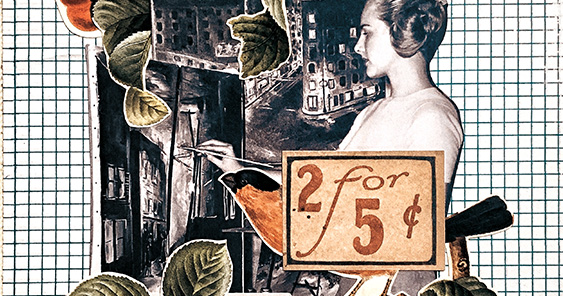“You can’t manage what you don’t measure.” This is one of the oldest and yet most powerful mantras of business
Words Paolo Mercado
If you want to grow your business, then you need to constantly measure where you are in terms of sales, market share and profitability. This principle applies to other fields as well, be it science, performance sports and even personal improvement, where scales, step counters and other biometric data are used to help one reach an ideal weight or health goal.
So, if we believe creativity is valuable, how much does creativity contribute to the Philippine economy today? What is the growth trend of creative industries in the Philippines? What specific creative industries are growing, and which are not? What is the source of business of these Iindustries? Is it from sale of goods, services, or other revenue sources such as advertising? How many people are employed by Creative Industries?
Surprisingly, these questions are not easy to answer as the creative industries aren’t clearly identified and consistently tracked by the relevant government information agencies. Most other economic sectors, be it mining, fishing, food manufacturing, electronics, or call center services, are easily classified under one of three “buckets” of the economy: Agriculture, Industry/Manufacturing & Service. In 2015, The Philippine economy generated 13,307 billion pesos in value. Agriculture contributed 10% to that, Manufacturing 33% and Services a whopping 57%. Since 2000, both Agriculture and Manufacturing have lost share contribution to Services, thanks in large part to the rapid growth of the BPO industry.
The first challenge in quantifying the Philippine Creative Economy is classifying which “bucket” of the economy it fits in. While we can easily rule out Agriculture, are Creative Industries classified under Industry/Manufacturing or Services?
Let us take Television for example. According to PSA data, in 2015, “Radio, Television & Communication Equipment & Apparatus” contributed a whopping 4.1% to the economy or roughly 311 billion pesos. But is this from the manufacture and sale of TV & radio equipment only? In actual fact, the number includes the advertising revenue of the TV and radio media companies who produce creative content that are consumed by most if not all Filipino households. Should television therefore be classified under the “Manufacturing” sector given that its revenue is generated, not by a sale of goods, but rather the sale of advertising airtime on their programs?
If one examines Philippine economic data further, one would indeed find it difficult to find the contribution of creative content (TV, Film, Music, Art, Illustration, etc.) and creative services (Advertising, Design, Architecture, Performance, etc.) to the national economy. The data is often hidden away under items such as “TV & Radio equipment & apparatus” or “Other Services.” The consequence of this lack of visibility is that when creative contribution is under-measured, it unfortunately becomes under-valued.
Two notable efforts have been made to quantify the “Hidden Wealth” of the Philippine creative economy. In 2008, a study was commissioned jointly by the CCP, NCCA and the ABS-CBN Bayan Foundation to map and measure the creative industries of the Philippines. This comprehensive work quantified the value generated by eight Core Copyright Based Industries (Press & Literature; Music, Theater & Opera; Motion Picture & Video; Radio & Television; Photography; Software & Databases; Visual & Graphic Arts; Advertising). Based on their analysis of 2006 economic data, these creative industries:
- Represented 31% of all large companies in the country
- Employed 321,000 Filipinos
- Contributed 5.4% to the country’s GDP.
In 2010, the DTI updated this Creative Industries Study and showed that while Creative Industries contribution to GDP was only at 4.25% in 2008, it bounced back to 5.44% in 2009. Unfortunately, I haven’t found any updated national data on our creative economy since the 2010 DTI report.
How could measurement help grow the Creative Economy? As with any business venture, establishing baseline data is key to developing strategies for growth. For example, which creative industries generate the most revenue? Which show consistent growth? Which employ the most people? Which are the most profitable? Which generate dollar-denominated revenue from overseas clients/markets? Having solid data behind these questions sets a firm foundation for economic policies that prioritize, incentivize and nurture high growth creative sectors.
But more than just identifying which sectors are big, growing and profitable, measurement should also help identify the sources of revenue of these creative industries. The previous studies selected “Core Copyright Based Industries” as the main definition of the Creative Industries. This selection is in line with the thinking of John Howkins, who is regarded as the father of the Creative Economy concept. In his book, “Creative Economy: How People Make Money from Ideas,” John Howkins distinguishes Creative Industries from other industries by their ability to generate value primarily (and sometimes exclusively) from ideas.
Thus a true measurement of the Creative Economy should also dive into the source of revenue of the selected creative industries. Does the industry make money from selling creative products? Does it earn from contracting service fees? Or does it earn from licensing or franchising of creative intellectual property?
As of this writing, I have not seen any data quantifying the sources of revenue of the Philippine Creative Industries. My guess is “Creative Services” likely contributes more than a lion’s share driven primarily by advertising and media revenue. This would then be followed by “Creative Products” and then finally “Creative Ideas” as a far third. If I were a betting man, I would wager the split to be 80+% Creative Services, 15+% Creative Goods, and less than 5% Creative Ideas. If anyone has data that proves otherwise, I would be very happy if you shared it.
Conjecture aside, such measurement would reveal the creative value and upside potential of our economy. The more we focus on generating revenue from creative ideas by producing original and copyrightable work, then the higher up the value chain of the global marketplace of ideas we will be.
Creating Our Creative Economy: I am a business professional convinced of the value generating power of creativity for private businesses as well as local and national governments. This column explores and investigates how others have successfully turned creativity into economic value for themselves and their community. I am a marketing professional, raised in a family of advertisers and writers, with a passion for teaching and an obsession for the performing arts.







